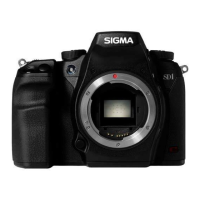A masterpiece in the making.
A flagship is born
Have digital cameras
become boring?
Has digital camera technology
reached maturity? Or is it just that
no real innovations have appeared
in so long. Certainly, the digital
camera front has offered little to get
excited about in recent years.
This observation, shared by most
photography enthusiasts, is a fair,
if harsh, judgment on the current
state of the digital camera industry.
At Sigma, we have taken this
criticism to heart.
During the burst of digital camera
market growth in the second half of
the 1990s, innovations appeared at
a rapid pace in the areas of pixel
count and image processing
technology, including white
balance and noise reduction, not
to mention auxiliary functions like
face recognition. Real progress was
being made and there was plenty
to talk about.
More recently, digital cameras have
gained still higher pixel counts,
video capability, and other functions
that provide practical benefits and
convenience. These advances were
offered with the best of intentions
— people desired them. But if this
same progress is also behind the
feeling that cameras have gotten
boring, perhaps it is time to rethink
what a digital camera should be.
Technology in turmoil
The first electronic still camera
appeared about 30 years ago, and
mass-market digital cameras have
been around for about 15 years.
Looking back on the many stages of
photographic innovation since the
19th century, you can see just how
young the digital camera really is.
Considering the digital camera's
rapid popularization and the
accompanying innovations in
performance and convenience,
you would be excused for getting
the impression that nothing
remains to be accomplished.
Appearances to the contrary,
digital cameras and imaging are
in a period of turmoil.
Measured against the long span
of photographic history, digital
photography is still in its formative
years. In Sigma's view, there
is still considerable room for
development.
The idea that digital imaging
technology is already mature is,
in Sigma's opinion, open to debate.
Radical technology for real quality
With the huge popularity of digital
cameras, people are using them
in new ways. Digital images are
playing ever more important roles
in our daily lives.
As in the past, photography is
an ideal medium for preserving
memories and expressing creative
visions. What is new is the use
of photos as communication,
particularly through photo sharing
sites and social media. In this new
domain, photos are part of
a person's online presence, a way
to share interests and a catalyst for
relationships.
Technology and functionality
continue to evolve to support these
new applications. Today's digital
cameras are designed to make
it easy to perform many tasks,
thereby encouraging more people
to enjoy photography without
hesitation. This is a good thing.
But when it comes to the critical
core of digital photography —
the image capture system that
determines image quality —
the overwhelming majority of
digital cameras are still on the same
well-worn road. Their fundamental
technology has not changed since
the digital camera's babyhood.
It is precisely here — in this key area
of the capture system and image
generation process — that Sigma is
charting a new course.
With a single-minded focus on
generating true, high quality
images, Sigma is the only digital
camera maker dedicated to
developing direct image sensor
technology and cameras that
incorporate it.
Irreplaceable moments,
immortalized
Moving scenes, candid shots,
breathtaking scenery ….
To preserve these moments
truthfully with all their evocative
power, the image capture system
is of overarching importance.
As the bedrock of photographic
veracity, the capture system should
be the primary target of research,
development and innovation
efforts. After all, photography exists
to reflect truth, and cameras exist
to take photographs.
We are not denying the success
of developments aimed at making
cameras easier to use.
We simply believe in going to the
heart of the matter by focusing on
innovation that actually improves
the quality of photographs.
Just as film followed an
evolutionary path of incremental
improvement, so the digital
camera's image capture system
must steadily and resolutely evolve
to realize its full potential.
There is much to be done and we
are set on doing it.
05

